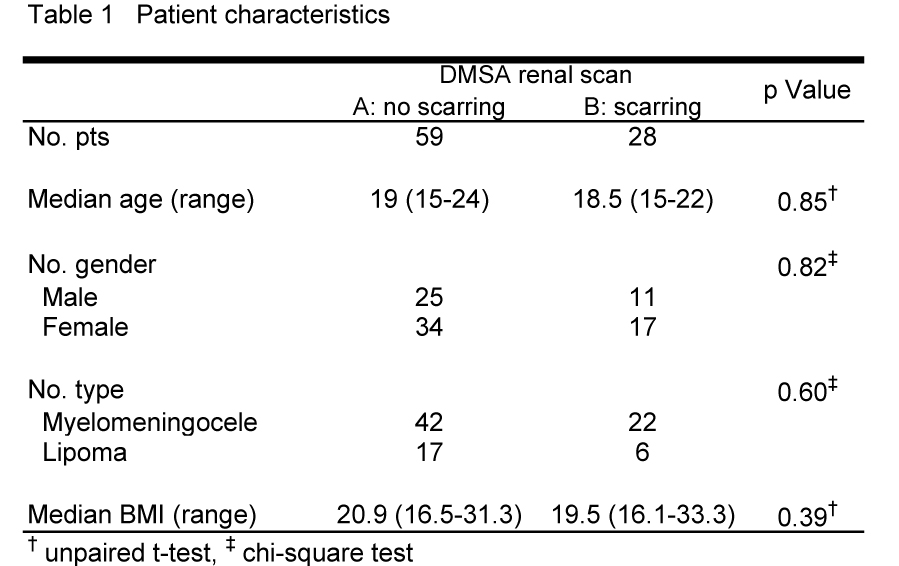The Role Of DMSA Renal Scan For Spina Bifida In Transition From Childhood To Adulthood: Renal Scarring Is Associated With Hypertension And Decrease In Egfr In The Era Of Transition To Adulthood.
Masaaki Imamura, M.D. Ph.D., Chihiro Hayashi, M.D., Woo Jin Kim, M.D., Yuichiro Yamazaki, M.D. Ph.D..
Kanagawa Children's Medical Center, Yokohama, Japan.
Introduction
Improved management for spina bifida (SB) has dramatically increased number of SB patients in transition from childhood to adulthood. To investigate renal deterioration for the SB patients, dimercaptosuccinic acid (DMSA) renal scan has been an optimal tool in childhood, but its benefit was still unclear in adulthood. We evaluated the role of dimercaptosuccinic acid (DMSA) renal scan for the SB patients in the age of transition to reveal its association with current renal function.
Methods
This study involved SB patients in the age of transition to adulthood (15 to 25-year-old) who visited our hospital regularly for routine urinary surveilance. DMSA renal scan was routinely performed in the age of transition concurrently with examination of serum creatinine, serum cystatin C, urinalysis and blood pressure between January 2006 and August 2016. eGFR was calculated with the estimated GFR formula (Uemura et al. Clin Exp Nephrol 2014) using serum creatinine or cystatin C if creatinine level was less than the age-specific normal range. Decrease in eGFR was defined as eGFR less than 90 ml/min/1.73m2, proteinuria as positive urine protein at urinalysis and hypertension as systolic or diastolic pressure more than the age-specific normal range. Patients were divided into two groups in the absence or presence of renal scarring on the scan (group A: absent, group B: present) and associated factors including decrease in eGFR, proteinuria and hypertension were compared between groups.
Results
There were 87 (male 36, female 51) patients analyzed. Median age was 18 (range 15 to 24), median BMI was 20.4 (range 16.1 to 33.3). In the type of disease, 64 patients have myelomeningocele and 23 have lipoma. Renal scarring was absent in 59 patients (group A) but was present in 28 (group B). There was no significant difference in patient characteristics between groups (Table 1). eGFR was significantly lower in the group B (median 121.0 in group A, 105.2 in group B, Figure 1). For associated factor analysis, decrease in eGFR and hypertension showed significantly higher rate in the group B (decrease in eGFR: OR 6.20 p=0.033, hypertension: OR 4.82 p=0.0032) but proteinuria showed no difference (Table 2).
Conclusion
In the age of transition, significant number of SB patients with renal scarring already showed signs of chronic kidney disease, suggesting that DMSA renal scan could be useful to select the patients necessary for close follow-up of renal function.


Back to 2017 Program
